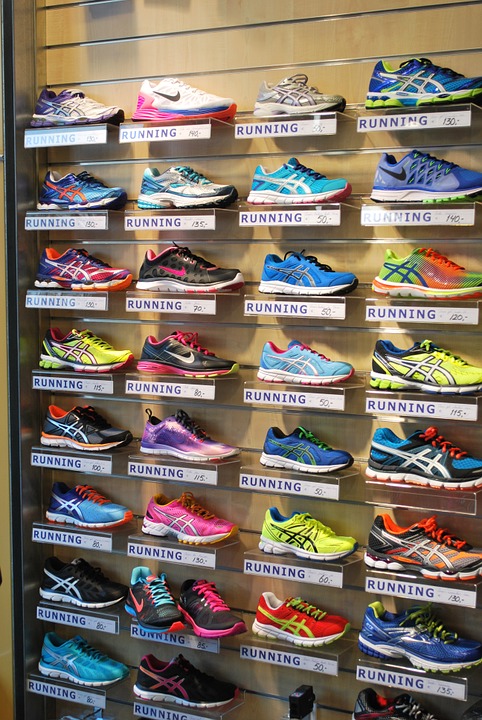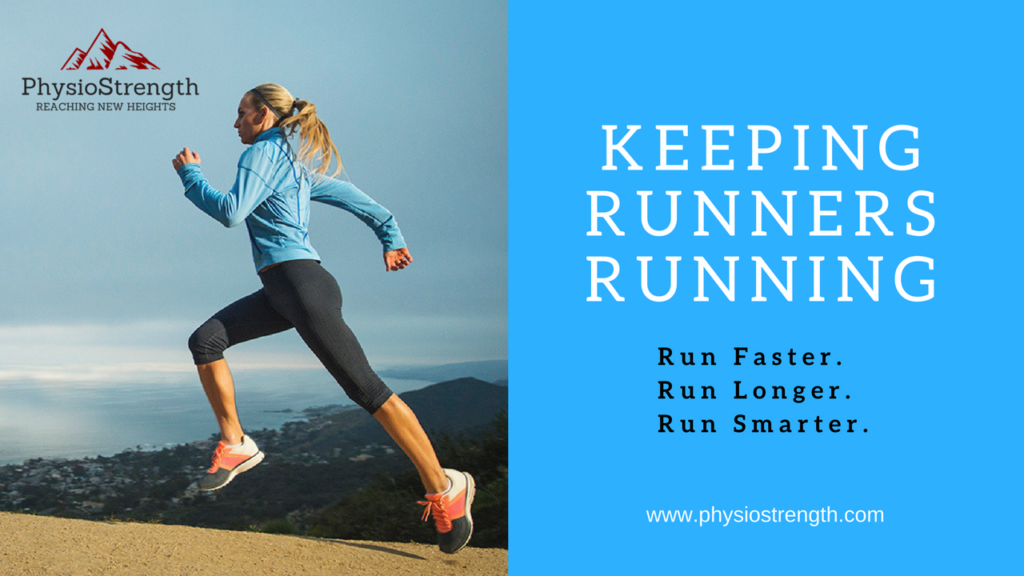How to Choose the Right Running Shoes for YOU

If you are an avid runner and have been running for a long time, you’ve probably found a certain pair of running shoes that you love and that you continue to stick with. But for those of you who walk into a running store and have absolutely no idea where to start, this article should help to give you some direction on which running shoes to purchase.
Shoe Anatomy
Believe it or not, there is actually a TON of variation between running shoes. I am not going to discuss every component of a running shoe, but I will provide you with a brief overview of what to look for.
- Outsole: This is the base of the shoe that most people refer to as the tread. In this day and age, most running shoe companies use the same type of rubber for the tread and the only real variation is in the design. Just as if you were buying a tire for your car, some running shoes will have an outsole with more grip than others. However, unless you are looking for a trail running shoe, most road running shoes are fairly similar in the outsole.
Upper: This makes up the bulk of the shoe. The upper is the portion that houses your foot. Many people choose shoes based on style and appearance of the upper. When choosing running shoes, you want the upper to be form-fitting, snug, and semi-breathable.
- Midsole: This is the most important part of the shoe and is what you should be focusing on when inspecting the build of a shoe. The midsole is the spongy, cushioning material between the upper and the outsole. All the fancy marketing technology in the shoe industry is about the midsole. With people who prefer different shoe types, you will find many different opinions about which type of midsole is best. Simply put, you want a midsole that is lightweight but adds enough cushioning between you and the road. We’ll discuss this in detail to follow.
- Last Shape: The last of the shoe is essentially the curvature of the shoe. Some people have straight feet and others have slightly curved feet. Most of the time you can just visualize this by flipping the shoe over. If you were to flip the shoe over and draw a straight line from the center of the heel to the center of the toe box, this would show you the last shape of the shoe. Typically shoes are either straight, semi-curved, or curved. If you try on a pair of shoes and either side of your toes feels like it’s being compressed, you either need a shoe with a different last shape or a wider toe box.
- Drop: This is another extremely important consideration of running shoes. The drop is the slant from heel to toe. For example, if the heel of the shoe is built up with 25mm of cushioning and the front of the shoe is built up with 15mm of cushioning, the shoe would have a 10mm drop. That is a very standard drop for a running shoe. Most of the runners I see have no idea what the drop is of the shoes they are wearing, but they should. Part of the reason why many people get injured when transitioning to a minimalist shoe is because they are going from a 10mm drop shoe to a 0-4mm drop shoe. Although it may not sound like much, it has a huge impact on tissue loading and striking pattern.
Classification of Running Shoes
In the past several years, ever since Born to Run was published, the shoe industry has changed dramatically. The book started a minimalist shoe movement and had runners questioning th
With all the running shoes on the market, there are different ways to classify them. I prefer the following classification system from most support to least support.
- Motion Control Shoes: These shoes are designed for runners with a very flexible foot who tend to collapse severely through the midfoot arch when striking. The medial (inside) portion of the shoe is build up to add support to the inside of the arch and prevent excessive motion. Many of these shoes have a 10-12mm drop.
- Stability Shoes: I like to think of these shoes as your standard running shoe with a 10mm drop. They have a balance of adequete cushioning while still being lightweight. Most running shoes fall into this category.
- Neutral Shoes: These have become increasingly popular lately. After the minimalist shoe craze died down a bit from injury rates rising with minimalist shoes, companies started developing neutral shoes as a hybrid between stability shoes and minimalist shoes. Neutral shoes tend to have less cushion than stability shoes and often have a drop from somewhere between 4-10mm.
- Minimalist Shoes: These shoes tend to have a flexible upper, a wide toebox, and minimal or sometimes even absent midsole (cushioning). They tend to have a drop from 0-4mm.
Choosing the Right Shoes
When choosing a running shoe, it is always important to consider the following things:
- Training volume: How much do you run? Running is a repetitive activity and over time, can cause a lot of cumulative stress through joints. Volume of training should always be considered in purchasing footwear.
- Running style: Do you tend to strike with your forefoot, midfoot, or heel? About 75% of shod runners have a heel strike pattern. This is not necessarily a bad thing, despite what some people might tell you. In fact, there are pros and cons to each striking pattern. The ground reaction forces are distributed differently based on your running mechanics. There is research to show that a forefoot striking pattern will decrease over-striding and reduce ground reaction forces through the knee joint. However, it also causes increased loading through the achilles tendon and metatarsal heads. For more information on striking patterns and ground reaction forces, see this article.
- Foot type: This factor is not going to be as easy for you to assess. A physical therapist trained in foot and ankle biomechanics would be able recommend footwear based on your foot shape, mobility, and strength.
- Comfort: Let’s face it, if a shoe isn’t comfortable, you are not going to wear it. If a retail associate at a running store ever tells you that you need a specific shoe and it doesn’t feel right on your feet, then it’s not for you. I always tell my patients that comfort of running shoes is one of the most important factors.
How do you take in all this information and decide which running shoes to buy?
My recommendations
Want To Learn More About Running?
Keeping Runners Running is the ultimate online running course. It was designed specifically for runners to help you increase your performance, learn to write your own training program, and learn to manage common running injuries. The course includes 23 lessons, 50 videos, and a 20 page workbook! It was created and designed by a Doctor of Physical Therapy and runner. Learn more here!



